Social media marketing sounds easy enough.
Post some content on Facebook, send out some tweets, make a few connections on LinkedIn, and sit back and watch the leads pour in.
That’s all there is to it, right?
I used to think that was the case. Of course, that was in the early days of social media. We were all trying to figure out what the heck Twitter was for, let alone how to use it. And leads? We weren’t getting anything worth talking about.
Social media has come a long way since then as have the strategies, tactics, methods, and power associated with social media.
In reality, a successful social media marketing campaign is multi-dimensional. Actually, it’s kind of complicated. Ask any social media marketer “How do you do social media marketing?” and you’re likely to get the “Um, where do I start?” look.
There are a lot of elements to address and minute details to cover. Often, the most difficult stage is the initial one, when you’re trying to gain traction and pick up momentum.
Without a proper game plan and a fundamental understanding of the underlying processes, you can easily find yourself floundering in the wide world of social media.
Don’t be discouraged if you’ve been feeling this way. That floundering feeling is common. In fact, “59.5 percent of social media marketers report that their strategy was having either neutral or negative results.”
Here is an excerpt from Duke University’s CMO Survey:
“45 percent said they haven’t been able to show social media’s impact on their company’s performance at all, and only 13.2 percent believe they have proved the impact quantitatively.”
Yikes. If that’s what a sampling of CMOs is saying, don’t stress over the fact that you’re not getting the ROI you want.
Social media marketing is tricky, but it’s still possible to succeed in it. You just need to figure out what’s broken.
If you know what’s broken, you can fix it, right?
Here are some possible reasons why your social media marketing has bombed and how to fix it.
You’re not targeting your core audience
I think there’s the misconception that whatever you post on social media will bring about results.
The thought is that even if it’s in no way related to your niche, everyone will get a kick out of what you post.
Take this post from Verizon, for example—an Instagram video of the Bronco’s logo in anticipation of the Super Bowl:

What if their core audience hates the Broncos? What if their core audience doesn’t care about sports in general or football in particular?
I’m not saying whether Verizon was right or wrong in choosing to post a Bronco’s image. (To their credit, they also posted a similar image of the opposing team’s logo.)
The point is this: Only post social media content that connects with your target audience.
Some brands get themselves in trouble when they post a hodgepodge of content with much of it being irrelevant to their core audience.
But at the heart of any successful marketing campaign, and especially social media, is a clear understanding of who your target audience is.
You need to zoom in on a specific segment of the population and create your campaign while catering to their needs and interests. No one else matters.
While it’s fine to explore different content ideas, it’s important to keep your sights on your core audience and center your campaign around them.
Here’s an example of GrubHub killing it with a food-centric tweet that’s laser-focused on their demographic:

Red Bull knows their target audience too, and they know that a tweet like this is bound to get traction among their action-sports audience.
You’re too salesy
I get it. You want to get the ball rolling, get those leads coming in, and boost your sales volume.
Right out of the gate, you’re thinking promote, promote, promote! If I just keep pushing my product/service down my followers’ throats, they’ll acquiesce and buy. It’s a numbers game!
But this is a terrible approach to have on social media, especially in the long run.
This approach will turn off your existing followers and make it nearly impossible to establish any type of sustainable following.
Of course, you’ll want to promote your brand. But you need to do it with tact. You don’t want to be overly aggressive and salesy about it.
In its slideshow, Rallyverse talks about “the golden ratio for social media,” which is 30/60/10.
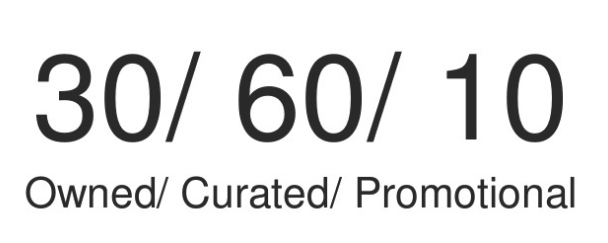
This means that 30 percent of what you post should be your own original content, 60 percent should be curated from relevant, external sources, and only 10 percent should be promotional.
While I think there’s a little wiggle room with these numbers, this is a great ratio to aim for.
Tim Ferriss has plenty of his own content to promote, but look at what else he does:

He doesn’t mind promoting others even when it’s a link to a book selling on Amazon.
Curating, sharing, re-tweeting, and promoting content other than your own allows you to promote your brand and generate quality leads without being annoying about it.
Your campaign lacks consistency
Social media marketing is a marathon—not a sprint.
If you expect to see legitimate results, you’ve got to keep your foot on the gas pedal and not let up.
Another mistake I see brands making is getting hot and heavy at the beginning, when they post content like mad for a few weeks or months, only to start losing steam shortly after.
They take their foot off the gas pedal and start posting sporadically. They may even go MIA for several weeks and not check their accounts, let alone post any new content!
In order for your brand to stick, you’ll need to find at least some level of consistency with your social media marketing.
You need to keep at it.
I know it can be disheartening when you put so much time and effort during the initial stages and it seems like no one’s responding.
But you need to see the big picture and keep your eyes on the prize. If you’re persistent and consistent, the odds should eventually swing in your favor.
You’re not posting at the right times
One often overlooked aspect of social media marketing is the time of posting.
We’ve all heard “post at the right times!” But are we truly practicing it?
Just like vehicular traffic varies depending on the time of day, social media usage waxes and wanes too.
But the good news is it’s predictable.
Here are the best times to post on Facebook, Twitter, and LinkedIn:
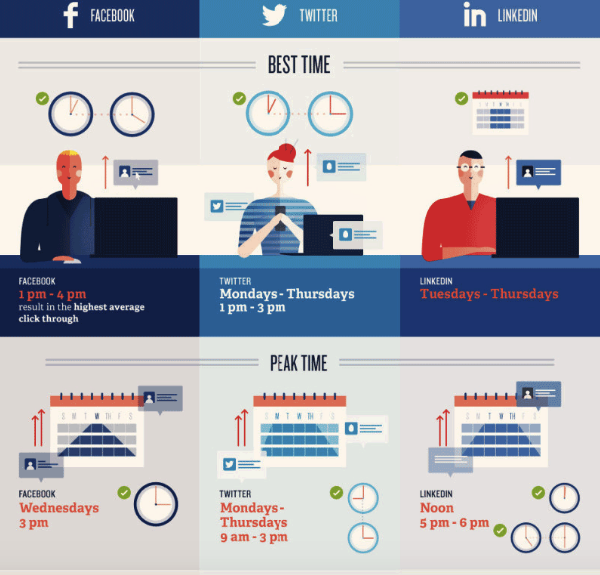
On the other hand, there are times when social media usage dwindles:
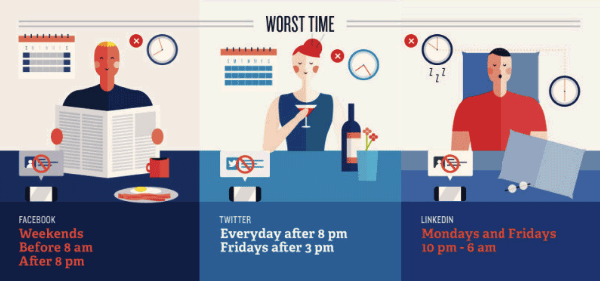
If you haven’t considered timing as a factor, it’s something you’ll definitely want to be aware of.
I also understand you may not be able to schedule your life around posting at optimal times.
That’s why I recommend using a tool such as HootSuite or Buffer, where you can schedule your posts in advance.
I often use Buffer’s Optimal Timing Tool:
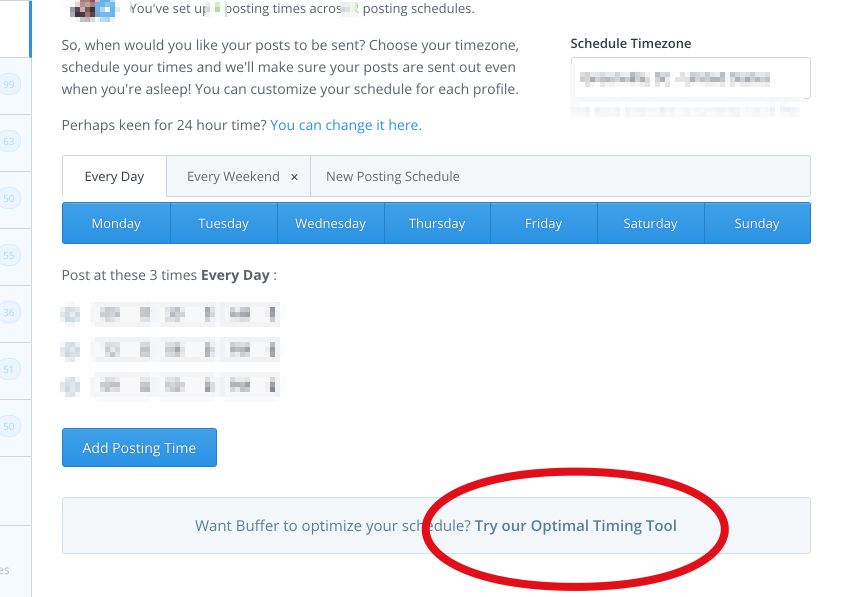
This tool takes all the guesswork out of optimizing posting times. Instead of me trying to figure out when my global audience is most likely to interact with my social media posting, the tool figures it out for me.
When I ran the tool just a minute ago, it gave me these results:

The half life of a tweet—the time it takes to generate more than half of its engagement—is only 15 minutes.

Think about that. The difference between my tweeting at 4:00 a.m. versus 10:23 a.m. is the difference of thousands of engagement points.
Time it right, and you’ll succeed.
You’re not engaging your audience
No one wants to follow a brand that comes off as distant and aloof.
They want to follow a brand that’s real and that interacts with them. They want to know their voices are being heard.
I’ll be the first to admit that social media marketing can be incredibly time-consuming, especially once you start getting a high volume of comments.
But your campaign is at best going to hit a plateau if you’re not consistently engaging with your audience.
At worst, your overall following will decline along with your leads and conversions.
If you don’t have the time to respond to comments and participate in digital discussions, I recommend delegating these tasks to other team members or even hiring an outside party to manage your campaign for you.
You’re pigeonholing yourself
Did you know that Internet users have an average of 5.54 social media accounts?
If you’re only active on one or two networks, you’re missing out.
I’m not saying you have to spread yourself thin and have accounts on 10 different networks, but you definitely don’t want to put all your eggs in one basket.
Like most things in life, it’s all about balance.
I would say that a good number to shoot for would be three or four networks.
This should be manageable and allow you to reach a large portion of your demographic without it overwhelming you.
You’re focusing on “vanity metrics”
“Vanity metrics” (friends, followers, “likes”) are the most common metrics marketers use to measure the business impact of social media.
But just 14% of marketers tie vanity metrics to sales levels.
I get it. Seeing your follower count grow and grow and getting a lot of likes on Facebook feels great.
On the surface, it appears that your campaign is heading in the right direction. But are these vanity metrics actually leading to results? Do they tell the whole story?
I know from personal experience just how shallow these types of metrics can be. And if you’re not careful, you can get lulled into a false sense of security when in reality your social media marketing is tanking.
What’s the solution? Make sure you’re taking a deeper look into your metrics to see what’s really happening.
At the bare minimum, I recommend using a basic platform such as Google Analytics to get a decent vantage point of trends and patterns.
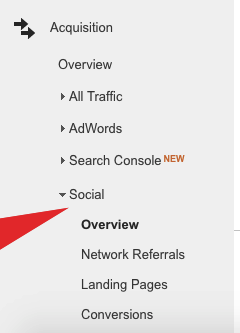
You can use their “Social” feature to learn things like:
- which networks are bringing in the most traffic,
- where you’re getting network referrals from, and
- what’s leading to conversions.
This will allow you to see the big picture.
You’re not using any metrics
Q: What’s worse than fixating on vanity metrics?
A: Not using any metrics.
How can you tell what’s working and what’s not if you’re not using any concrete data?
What’s crazy is the ridiculously high number of CFOs and CMOs that go with their gut instead of relying on legitimate data.
In fact, “a survey found that 46 percent of CFOs admitted to making important decisions based on instinct.”
Wow. That’s a lot of decision-making that’s based on very little!
Don’t get me wrong, you don’t want to “slavishly obey data” even when it goes against common sense.
But you’ll definitely want to utilize metrics in some capacity when making key decisions about the direction of your social media marketing.
If you’re not sure which tools to use, check out this list from Keyhole. It highlights 25 different social media analytics tools and should point you in the right direction.
Conclusion
Not to be pessimistic, but there’s a lot that can go wrong with social media marketing. And it’s important you understand some common mistakes many marketers make along the way.
By knowing what to avoid, you can recalibrate your campaign to ensure its success.
If your social media marketing has gotten off course, you can steer things back on track and achieve the results you’ve always been hoping for.
Can you think of any other specific reasons why social media marketers fail?

Source Quick Sprout http://ift.tt/2fJ0cSf

